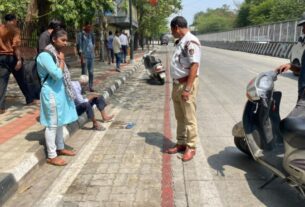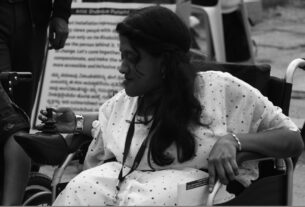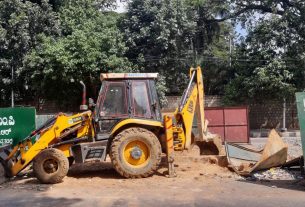Despite the impending risk of Day Zero, Bangalore stands bereft of water-conservation policies.
By Jagriti Parakh
Imagine waking up one day with no water in the tap to wash the sleep off your eyes; no water to drink, or even to make coffee with; no water to shower, flush the toilet, or do laundry. A water(less) apocalypse, ain’t it?
Even though Bangalore is facing a severe water crisis – a growing population and rapid urbanization are depleting its water resources at an alarming speed – flushing toilets is not typically recognized as a cause.
The total population of Bangalore is estimated to be over 13.9 million. Considering that an average individual uses the toilet seven times a day, and each flush uses between four to six liters of water – we’re flushing out a whopping 486.5 million liters of water on a daily basis.
Bangalore is reeling under water scarcity, water mafia, and polluted water bodies. Despite the pressing need of introducing demand management measures to prevent water scarcity, there is no policy on low-flush toilets or on water-conserving showerheads and faucets in Bangalore.
A low-flush toilet uses significantly less water than a full-flush toilet. It uses 4.8 liters or less per flush, as opposed to full-flush toilets that use 6 liters or more.
As per the Bureau of Indian Standards, a minimum water supply of 150 to 200 liters per capita per day (lpcd) is required for domestic consumption in cities with full flushing systems, whereas, using a low-flush toilet can reduce this consumption to 130 lpcd.
Even though Bangalore Water Supply and Sewerage Board (BWSSB) has long recognized the potential of water treatment and reuse, and made it mandatory for residential complexes of 20 houses or more (or of 2,000 m2 or more) to install their own small-scale sewage treatment plants (STPs) with dual piping for reuse, there is a long way to go in terms of introducing water-conservation in the policy framework.
It is recorded that BWSSB loses about 49.25 percent of the water supplied through their networks as non-revenue water (through leakages, illegal connections, etc.). This economic loss reduces their ability to invest in much-needed infrastructure improvements.
B.M. Somashekar, Chief Engineer, BWSSB, said, “Water tariffs in Bangalore are too low, which doesn’t incentivize water-saving. As a consequence, more and more energy-intensive water imports from far away have been required. It is clear that the water table is declining due to overdraft. We have introduced water treatment and reuse in our policy to conserve water resources.”
BWSSB officials say that it’s because of negligence, and not lack of awareness that people are still not adopting water-conservation practices.
B.M. Manjunath, Public Relations Officer, BWSSB, said, “We have installed water-saving taps and dual-pipeline in our offices, but most government offices have not adopted these water-saving techniques yet. There is enough awareness about such techniques and technologies; it is now a matter of choice. We cannot issue guidelines, or laws to restrict the use of certain kinds of taps or flushes. It is up to people to change their ways.”
Most government offices across the city have traditional, full-flush toilets. Only newly constructed offices and hotels have dual-flush toilets that use two buttons to flush different amounts of water. Some residential and commercial complexes have dual-pipe plumbing installations to supply both potable and reclaimed water.
Some people say that using treated wastewater while flushing increases the concentration of uric acid, nitrates, and nitrites which leads to foul-smelling toilets.
Raghuram, who lives in a residential complex with 320 families and an aerobic STP with a capacity of 1,50,00 lpd, said, “We have recently started using STP treated water for flushing. In order to discourage microbial activity, we add chlorine (1.0 ppm) to the treated water just before it is pumped to flushing tanks. Since the same water is re-circulated repeatedly, I am concerned that uric acid concentration will get higher over a period of time, as it never gets eliminated but keeps magnifying. I fear this may lead to foul smell in toilets eventually.”
Although some scientists say that Bangalore is heading towards Day Zero, the city does not necessarily have to be in a water crisis. A recent study shows that there is actually enough water even for 20 million Bangaloreans if managed properly.
Lukas Ulrich, who specializes in sanitation and wastewater management solutions for development and is heading the 4S (Small-Scale Sanitation Scaling-Up) project in Bangalore, said, “Karnataka receives fairly good amounts of rain over the course of five months. If harvested properly by recharging groundwater, rainwater could become the primary source of water supply for the city.
“Along with that, people must also reduce their daily water consumption. This can be done, without compromising comfort, by installing waterless urinals, low-flush toilets, and water-saving nozzles, showerheads and washing machines. But many people are not sufficiently aware of the challenges and their possible solutions. Therefore it is very important to raise awareness and communicate behavioral changes—starting from schools.”









